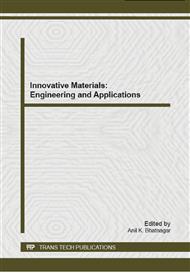p.316
p.322
p.327
p.335
p.346
p.352
p.358
p.367
p.377
Study on Demolding of Net Shape Formed SB/CF-EP Lining Products
Abstract:
For the net shape forming of composite products with structure of SB/CF-EP (steel backing/carbon fabric reinforced epoxy) lining, the demolding is difficult. Aiming to net shape forming of transmission screw nuts with structure of SB/CF-EP, a new solution was proposed in which the high-strength casting wax was used as the release agent. A basic demolding experiment was designed and comparative demolding experiments were conducted for three different conditions: wax and grease as release agents and no agent. The influences of different agents and agent thickness on demolding force, product sizes and surface quality were studied. In comparison with grease and no release agent the demolding force for wax was reduced by 91.6% and 98.0% respectively. The product shrink could be compensated by controlling the wax thickness. By using wax release agent, the fabrication of transmission screw nuts with SB/CF-EP lining was successfully completed.
Info:
Periodical:
Pages:
346-351
Citation:
Online since:
October 2014
Authors:
Keywords:
Price:
Сopyright:
© 2014 Trans Tech Publications Ltd. All Rights Reserved
Share:
Citation:


